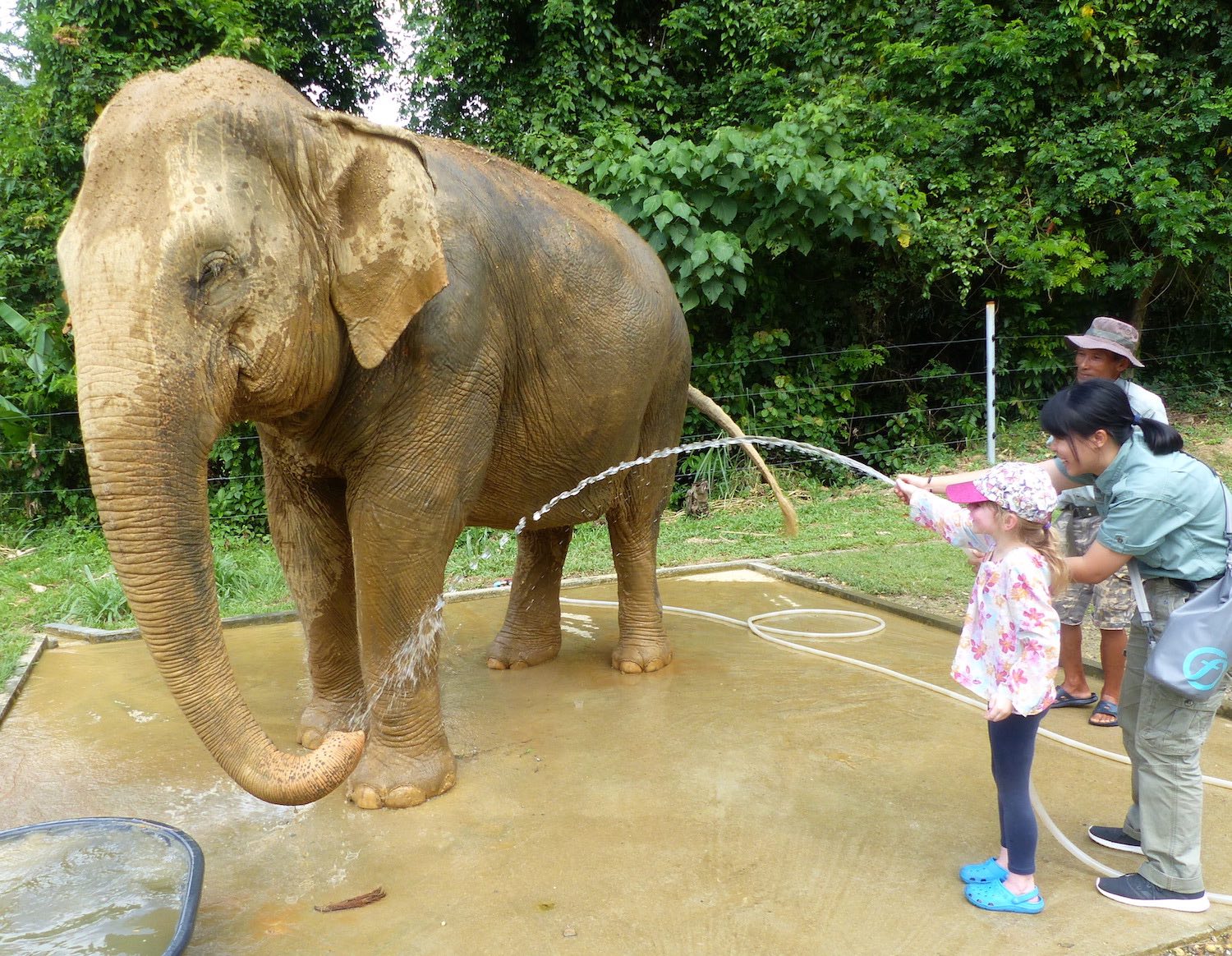Travel Tale: Thailand's Day Spa for Elephants
One deep, cooling mud pool. A bevvy of personal cleaners. Pineapples on tap. The residents at Elephant Hills have got it made. Once used to haul timber in the forests of northern Thailand, they now live a decadent life of lazy baths and long lunches. And we’re here to help them with both.
Phase One of what we come to call the Great Elephant Bathing Routine takes place in the mud pool. The two elephants whose turn it is for a dip can hardly contain their delight. It might sound odd to say that the largest land mammal on Earth can frolic, but that’s what these two do, tumbling around like giddy school kids and generally honking and hooting at each other in sheer happiness.
After their luxurious bath, the elephants reluctantly drag themselves out of the pool to join the rest of the camp’s herd foraging in the field. Their mahouts round them all up and lead them over to the washing blocks. It’s time for Phase Two. Saow, our guide, asks us which elephant we’d like to scrub down and the kids make an impressively quick-fire calculation as to which one’s the dirtiest. Mae Sri Kham is waiting patiently by a bucket and hose, caked from head to massive toes in mud and dust. She’s a real matriarch figure, pushing 80 years old and with the kind of look in her big brown eyes that says she’s earned this TLC and then some.
HOSING DOWN MAE SRI KHAM
THAT'S A LOT OF MUD TO SCRUB OFF!
The children are tentative at first, not really too sure how close they should get to an animal that is nearly ten feet tall at the shoulder and weighs just shy of five tonnes. But with some careful instruction from Padung, Mae’s mahout, they’re soon mucking in. Joe takes charge of the hose, fanning water up over her back and then jumping clear as it runs back down in thick brown streams. Padung shows him how Mae likes to drink directly from the hose – she greedily sucks it up, 15 litres at a time, and then sprays it all over herself, sending the kids scattering with squeals of delight as it comes raining down on them.
Maisie picks up a husk of matted coconut fibres from the bucket and starts rubbing away at the layers of dirt. Only Lilah is still a little unsure, so I hoist her on my shoulders and move in to help. She cagily pats the bony hump between those big brown eyes; then cautiously strokes the leathery skin; then succumbs completely and squeezes Mae’s trunk in a heartfelt hug.
As the muck is scrubbed away, pretty mottled patches of pink skin emerge on her forehead and at the base of her trunk. These, Saow tells us, are one of the ways you can distinguish Asian elephants from their African counterparts, along with their more rounded backs and smaller ears – which are constantly in motion, as Mae flaps them back and forth in an effort to keep herself cool.
ELEPHANT BUFFET
DECISION TIME: WHICH ELEPHANT GETS THE TAMARIND?
Phase Three is feeding. The elephants clearly know this, as they start making a beeline for the food hut as soon as the hoses are turned off. Spread out on the table inside are great stacks of bananas, pineapples, sugar cane and bamboo. We set to work, Joe chopping up the bamboo, Maisie carefully cleaving the pineapples into quarters, Lilah rolling a wad of sticky tamarind into a ball and then disguising it amongst some banana leaves (it’s good for an elephant’s strength, but it’s not their favourite food). And then we’re ready.
Maisie offers up a pineapple and a tangle of trunks reach out to take it. She carefully presses the hunk against the inside of the closest elephant’s trunk, as instructed, and watches as it’s swallowed down in one, spikey skin and all. A banana follows and is vacuumed up in a single “swuuut”. By now, Lilah and Joe have added their baskets to the mix and it’s a fruit frenzy free-for-all. The kids valiantly attempt to divvy up their loads fairly (Did Mae get 2 pineapples or 3? Has the little elephant on the left had enough bamboo?), but it’s impossible to work out whose trunk is whose in the jumble of grey appendages, so they just settle for trying to keep up with demand. Demand is high, though – adult elephants need to eat 150kg of food a day to survive – and the baskets are all soon empty.
The elephants turn away, contented. And so do we.
The Elephant Experience forms part of two- and three-night packages available to guests staying at the Elephant Camp in Khao Sok National Park. Khao Sok is 90km from Surat Thani Airport and 140km from both Phuket and Krabi airports.





